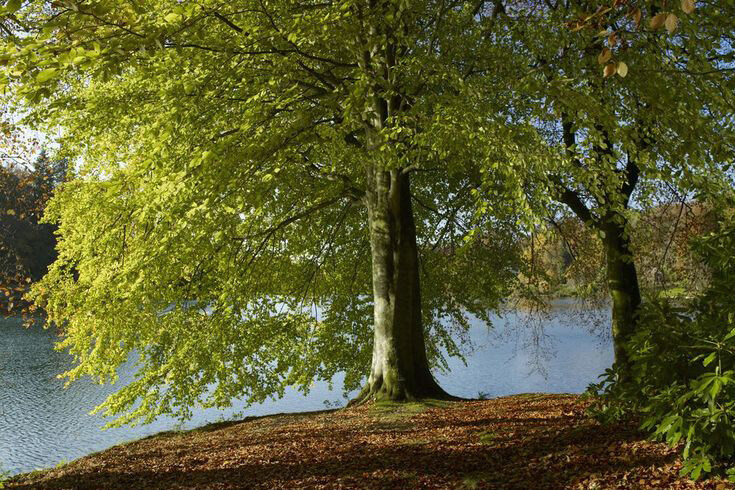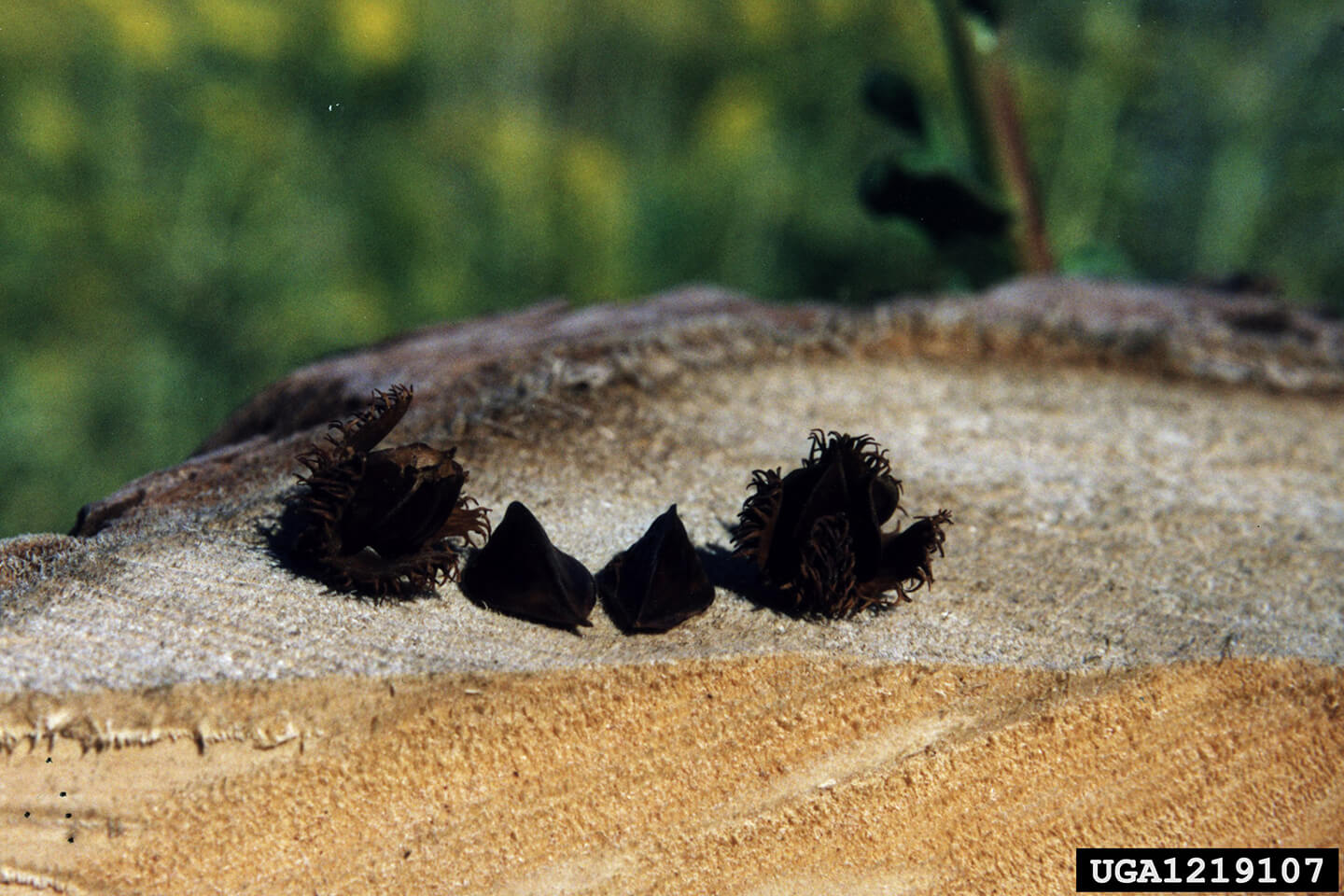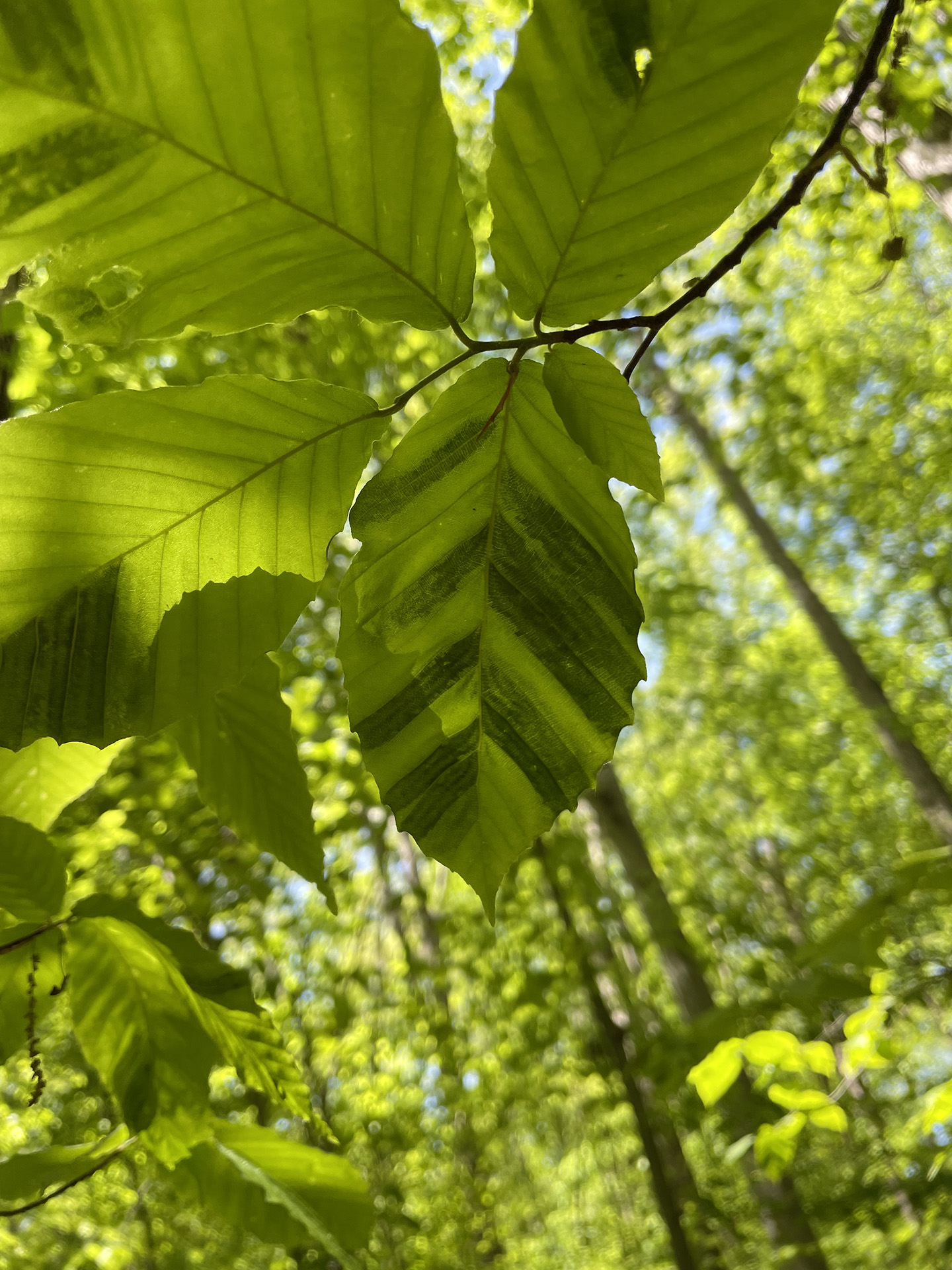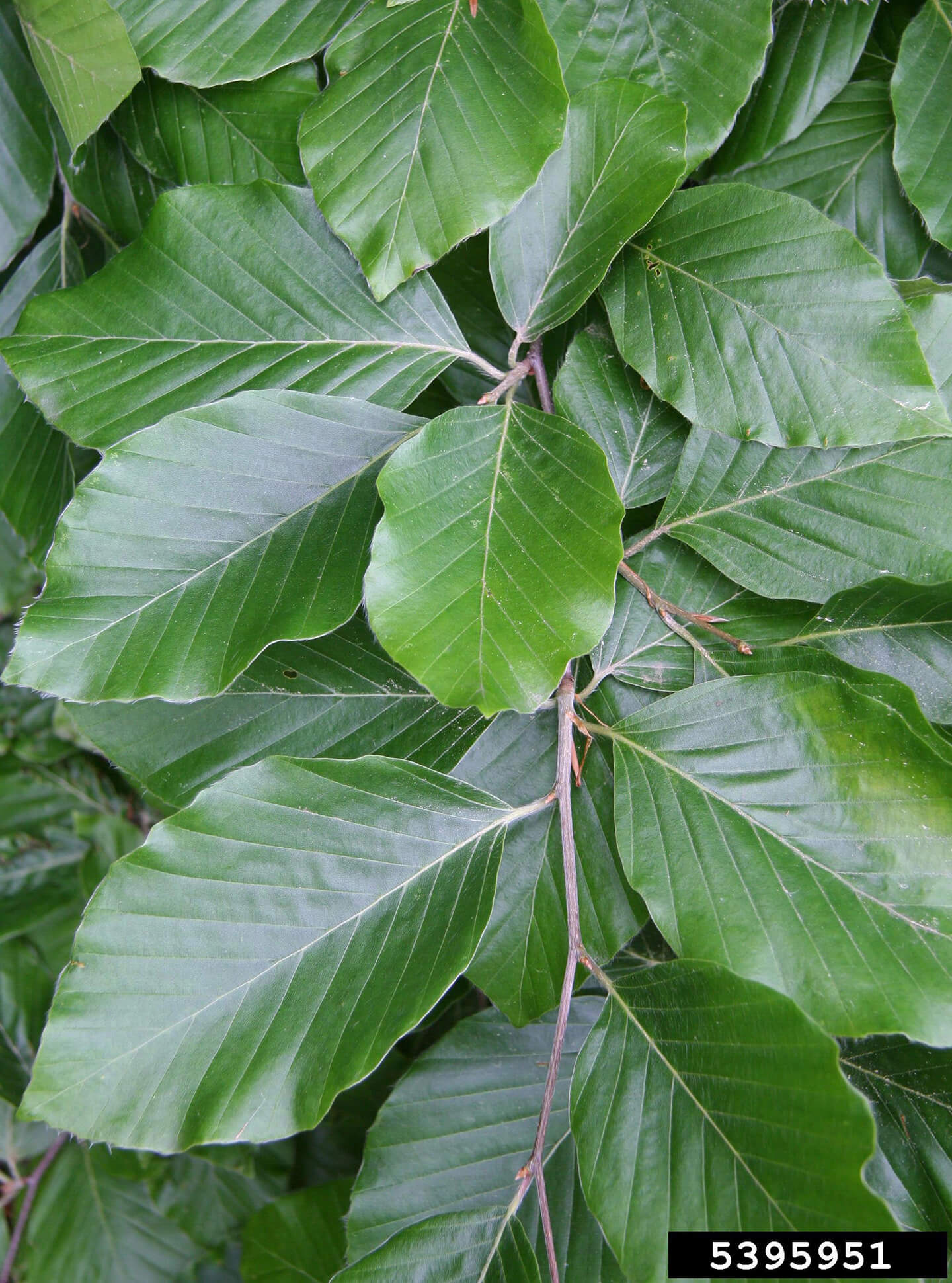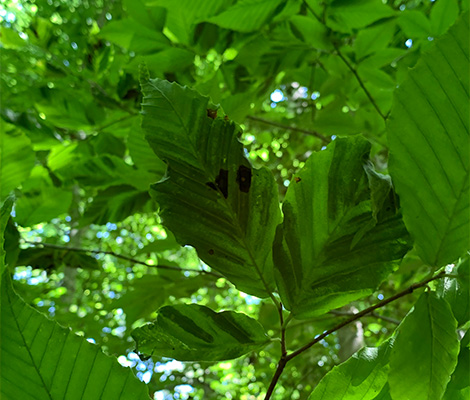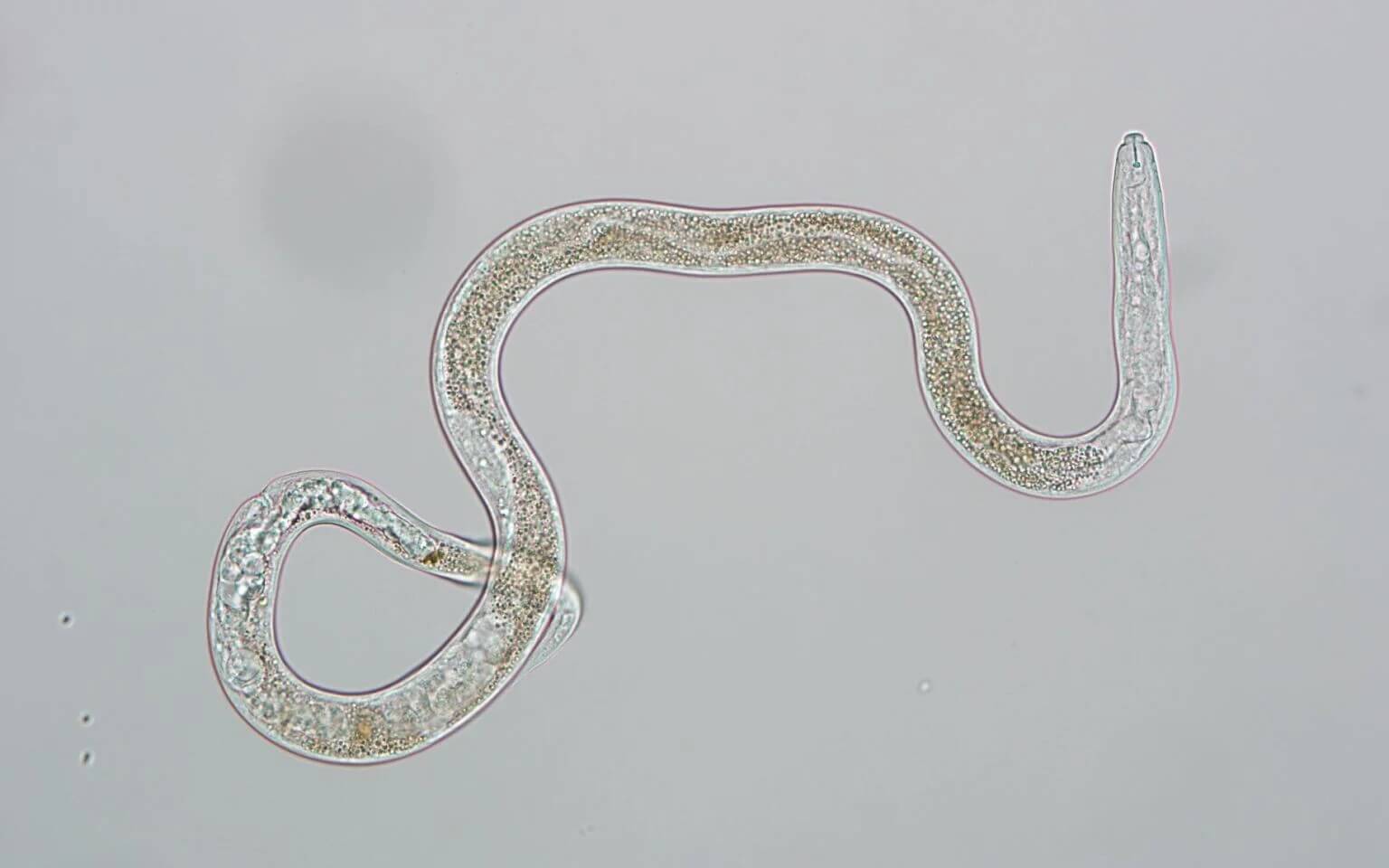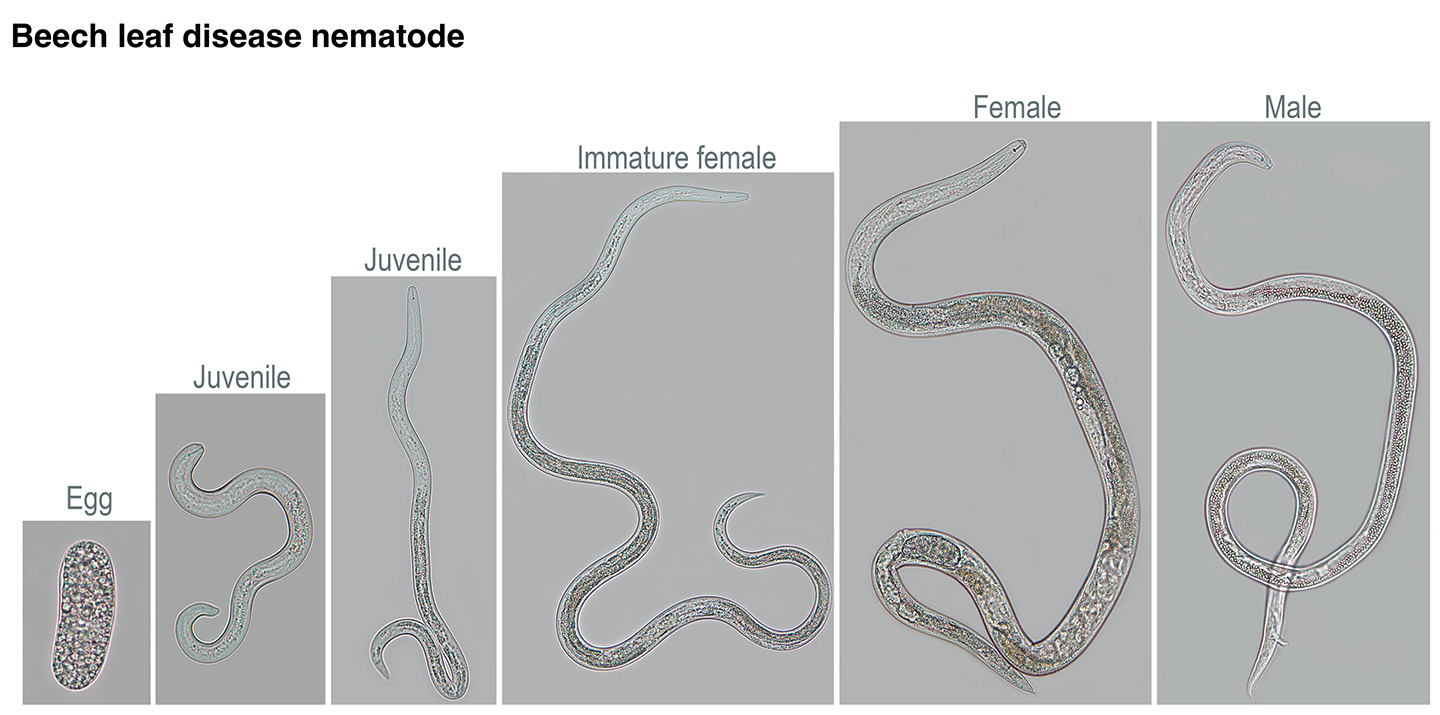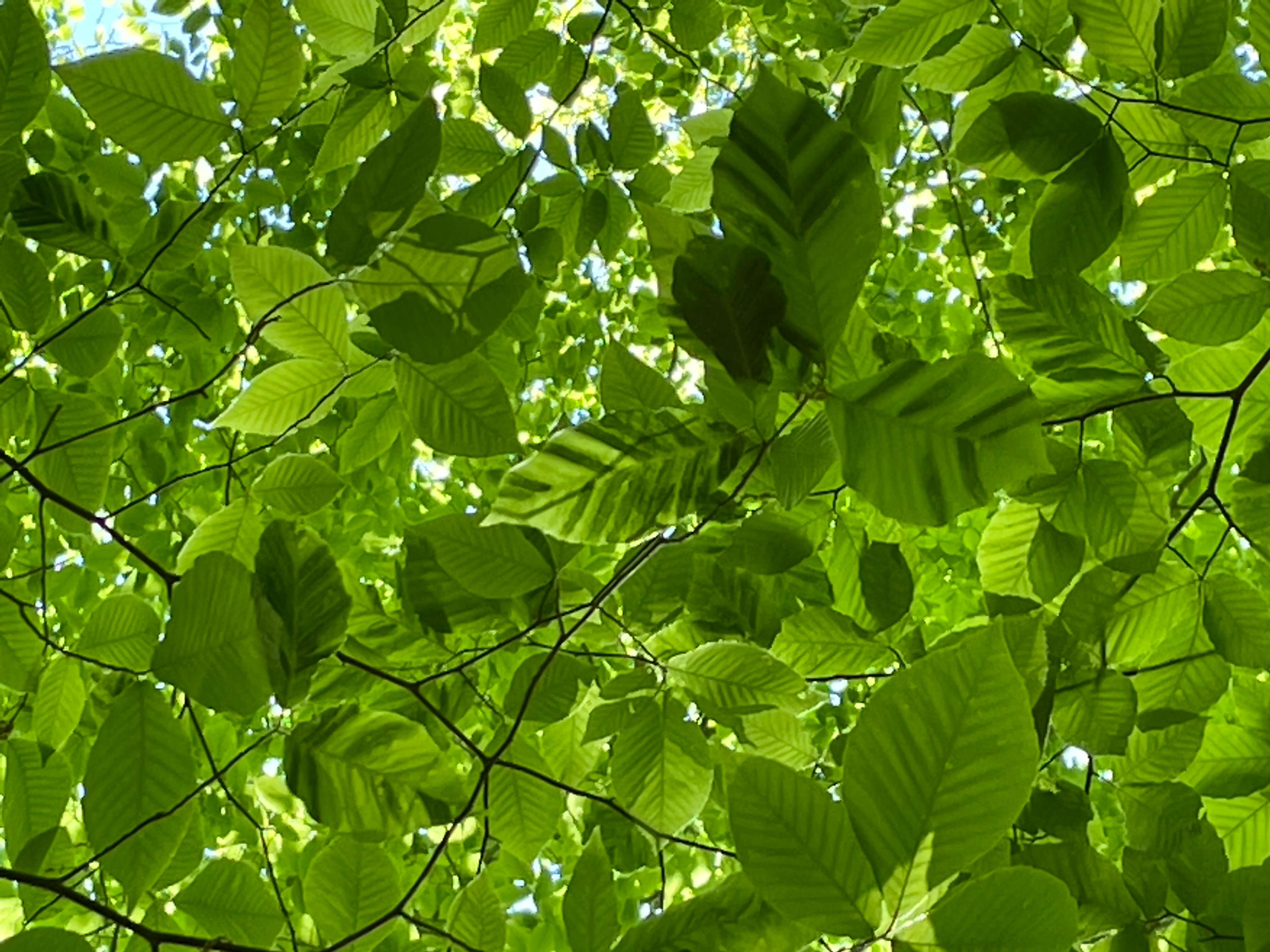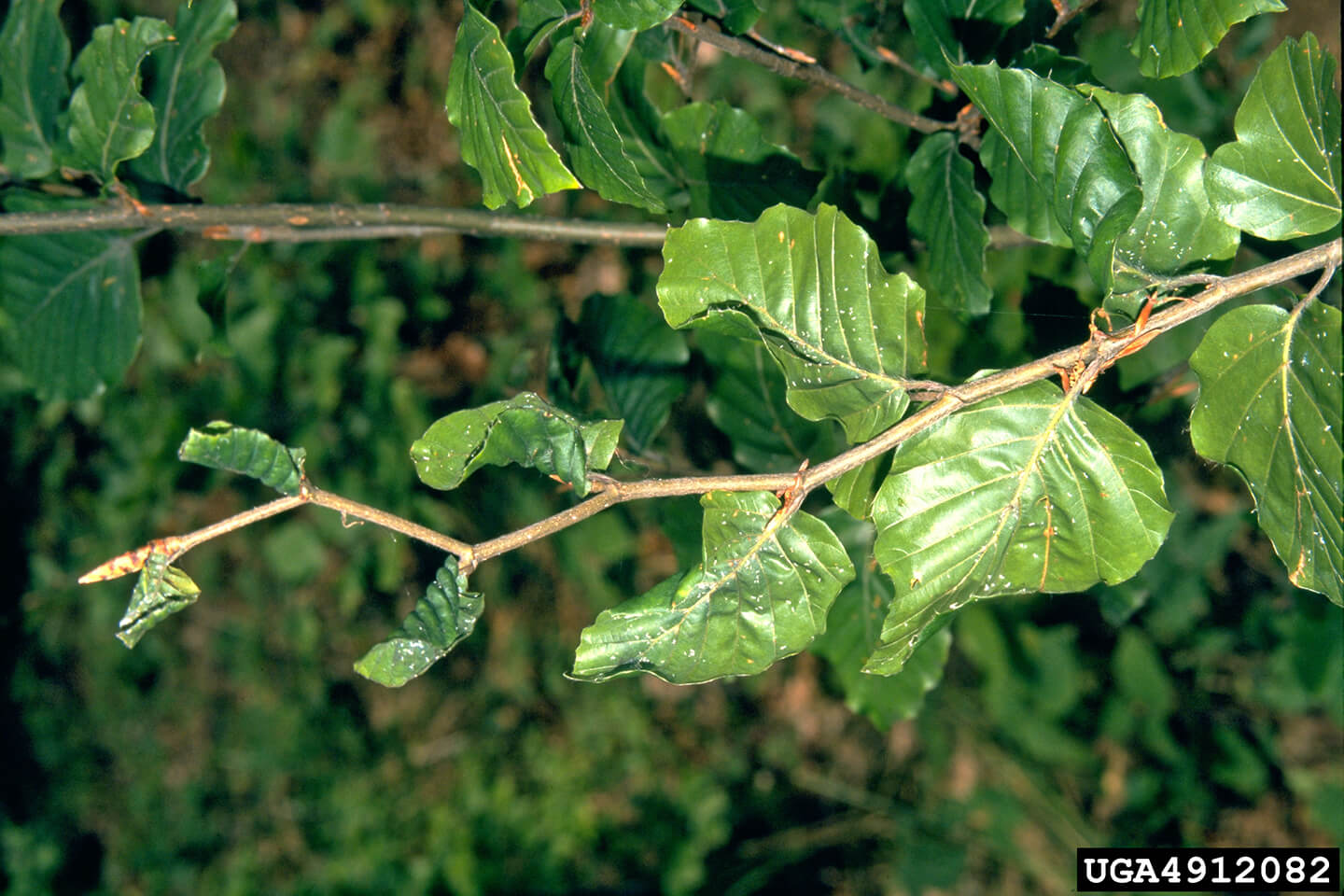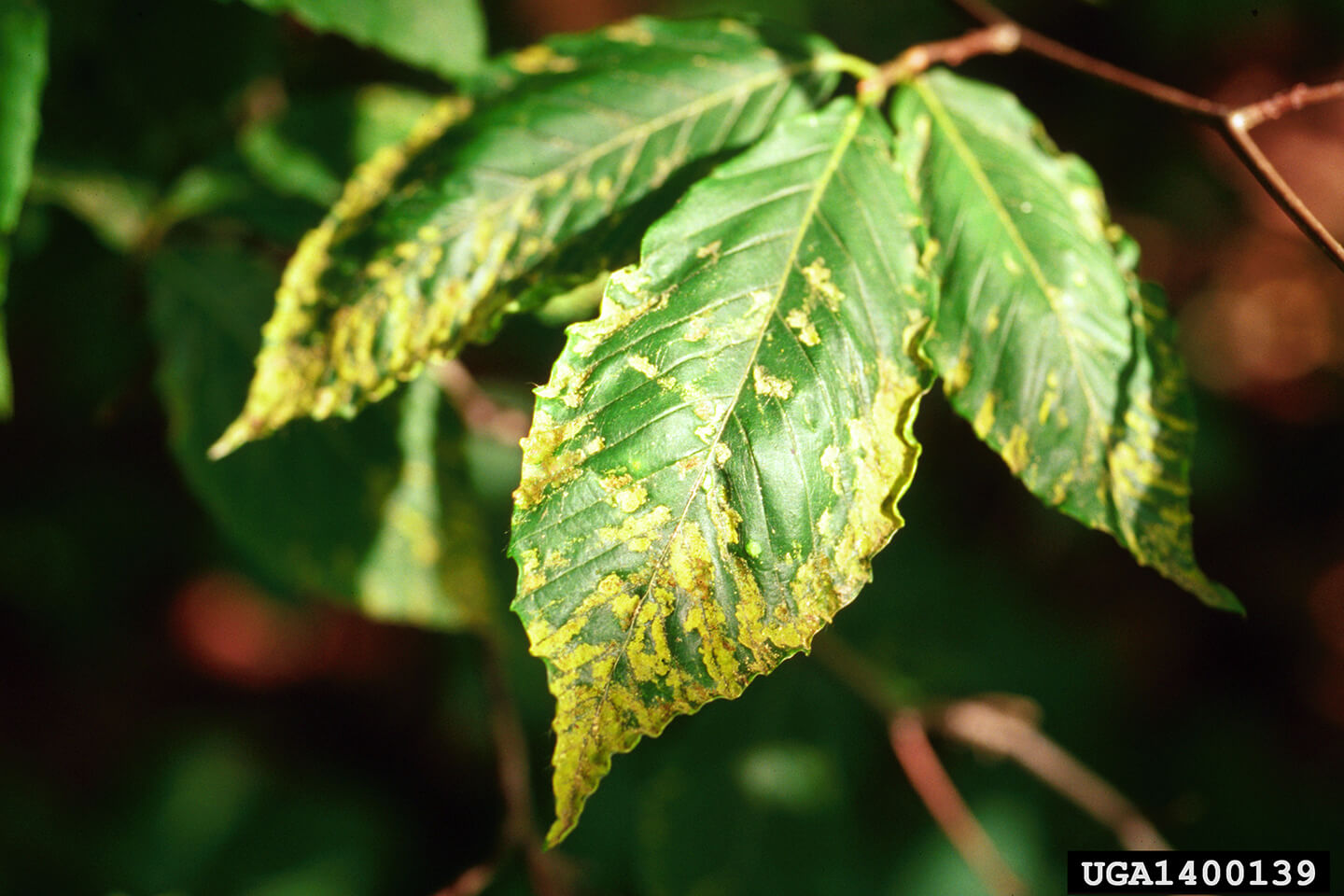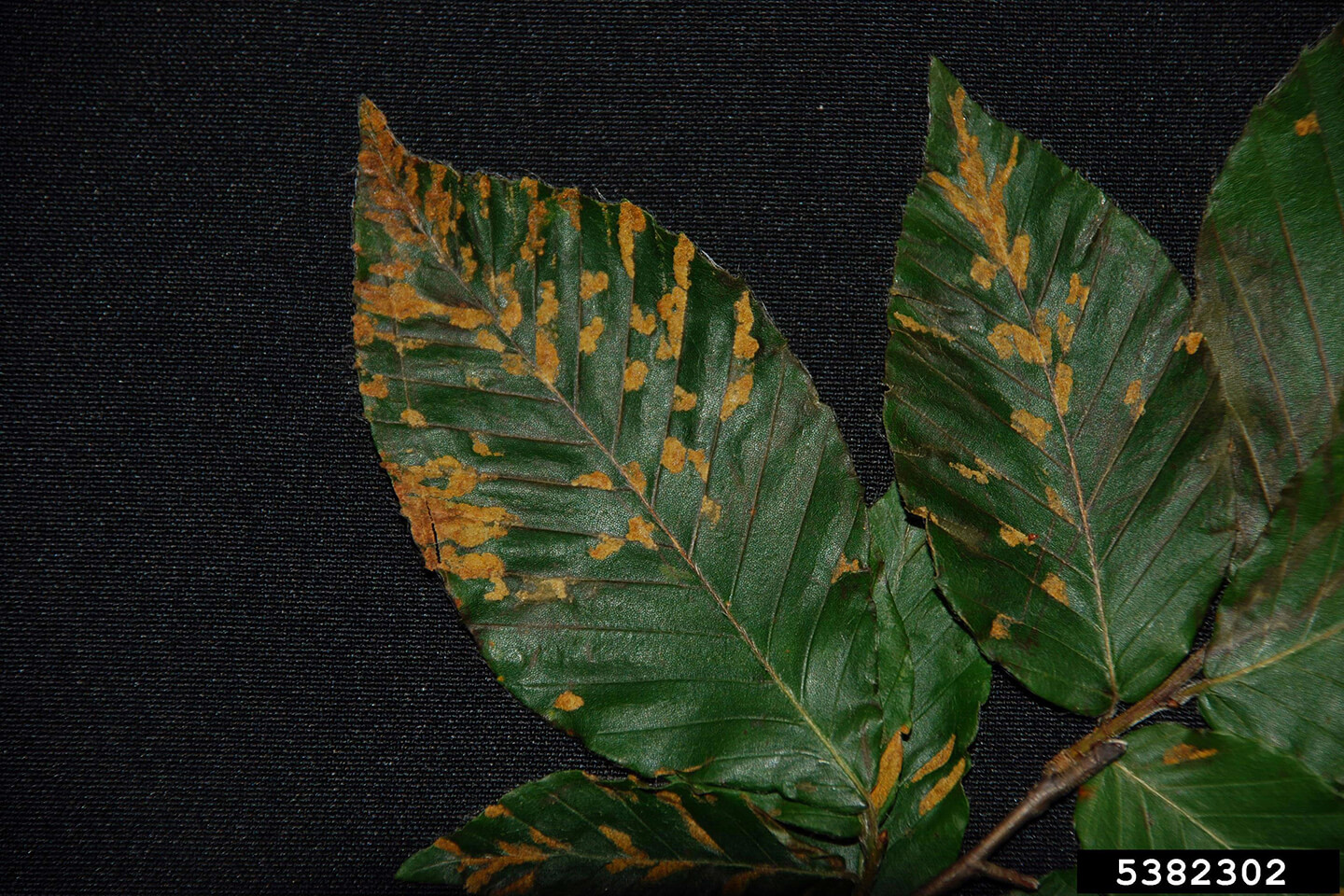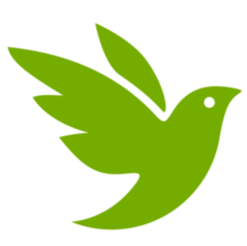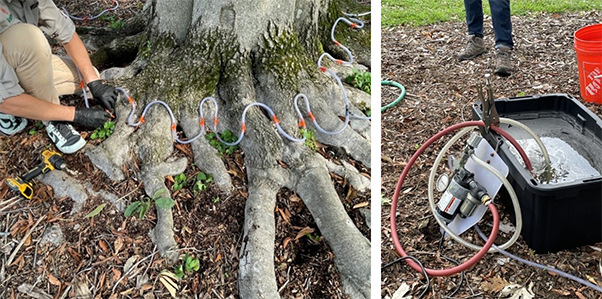Potassium phosphite, potassium polyphosphate, and other potassium fertilizers (0-0-27) have shown some good results in smaller trees. The product is mixed with water and applied at the base of the infected tree according to the label. It works by strengthening the cell walls of the tree leaves making it more resistant to nematode damage. The tree will likely show symptoms, but resist decline to varying degrees.
*UCFD staff recommend reading the product labels provided in this document.
Treatment Comparison Table
| |
Trunk Injection Arbotect® 20-S |
Foliar Spray Broadform® |
Potassium Phosphite Soil Fertilizer |
| Active ingredients |
Fungicide ~ Thiabendazole Hypophosphite |
Fungicides ~ Fluopyram and Trifloxystrobin |
Potassium polyphosphate (0-0-27) |
| Appropriate Trees |
Larger landscape trees with exposed root flares |
Smaller landscape trees |
Smaller landscape trees |
| Treatment frequency |
Each 2-3 years |
2-3 x per growing season |
2 x during May-August one month apart |
| Treatment efficacy |
Very effective |
Somewhat effective |
Somewhat effective |
| Chemical location |
Inside the tree stem, branches, leaves |
Tree surfaces |
Soil under the tree |
| Expense |
More expensive fewer treatments |
Less expensive more treatments |
Less expensive more treatments |
| Availability |
Certified, licensed arborist |
Certified, licensed arborist |
DIY or arborist |
| Environmental impact |
Very slow release through decay |
Subject to drift and runoff |
Very little if used according to label directions |
| Chemical Hazards |
YES - Label must be followed |
YES - Label must be followed |
YES - Label must be followed |
For all yard trees UCFD recommends such as proper mulching and watering during droughts. Because beech trees are shallow rooted, protecting them from mower damage and soil compaction is essential such as proper mulching and watering during droughts. Because beech trees are shallow rooted, protecting them from mower damage and soil compaction is essential.
UCFD recommends caution when considering chemical treatments. It is against the law to apply at rates above what the label specifies. When applying chemicals, the label is the law. UCFD recommends finding a licensed, certified, insured arborist: How to Hire an Arborist or Tree Care Company | Public Works and Environmental Services.
Research to find new treatments is ongoing. Currently, there are no treatments proven to be effective for BLD in forests. UCFD is tracking the spread of the disease while assisting in research efforts as staffing permits. UCFD will undertake a trunk injection treatment program limited to select amenity beech trees growing on Fairfax County property.
